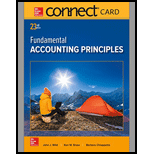
Introduction:
Ratio Analysis
• Ratio analysis is a study of several key metrics of a company based on the data presented in its’ financial statements with an objective to evaluate the financial health of a company.
• It is essential for investors, stakeholders, government bodies etc. to evaluate the key metrics of an entity in order to ensure that the company fulfills the going concern principle and displays financial stability.
The key metrics mentioned above include the following:
• Total Asset Turnover – A measure of the correlation between the Total assets employed and the turnover of the business.
• It seeks to evaluate the volume of sales in relation to the assets employed. It gives an indication of the sales in relation to the investment made in the assets and overall capital contribution to the company in the form of Assets.
• Return on Total Assets – A measure of the total
• It seeks to measure the return earned on the total assets i.e. the resources employed by the business to directly or indirectly increase revenue or reduce costs.
• Net Profit Margin – It is a measure of the total Profit earned from sales after deduction of operating expenses, selling and distribution expenses and other indirect costs.
• It is often the most sought after financial measure to evaluate profitability since it gives a clear indication of the
To Prepare:
Report comparing Roak and Clay companies highlighting their ability to meet current obligations and use current assets efficiently
Want to see the full answer?
Check out a sample textbook solution
Chapter 17 Solutions
Connect Access Card for Fundamental Accounting Principles
- I need help with this solution and general accounting questionarrow_forwardCozy Retreats currently sells 420 Standard hot tubs, 580 Luxury hot tubs, and 190 Premium model hot tubs each year. The firm is considering adding a Comfort model hot tub and expects that, if it does, it can sell 340 of them. However, if the new hot tub is added, standard sales are expected to decline to 290 units while Luxury sales are expected to decline to 310. The sales of the Premium model will not be affected. Standard hot tubs sell for an average of $8,900 each. Luxury hot tubs are priced at $14,500 and the Premium model sells for $22,000 each. The new Comfort model will sell for $12,300. What is the value of erosion?arrow_forwardSalma Production uses direct labor cost as the allocation base for applying MOH to WIP. The budgeted direct labor cost for the year was $850,000. The budgeted manufacturing overhead was $722,500. The actual direct labor cost for the year was $910,000. The actual manufacturing overhead was $745,000. A. What was Salma's predetermined manufacturing overhead rate per direct labor dollars? B. How much MOH was applied to WIP during the year?arrow_forward
- Hello tutor solve this question and accountingarrow_forwardThe total factory overhead for Leicester Manufacturing is budgeted for the year at $756,000. Leicester manufactures two product lines: standard lamps and premium lamps. These products each require 4 direct labor hours to manufacture. Each product is budgeted for 8,000 units of production for the year. Determine the factory overhead allocated per unit for premium lamps using the single plantwide factory overhead rate.arrow_forwardI need help with this solution and accounting questionarrow_forward
- https://investor.exxonmobil.com/sec-filings/annual-reports/content/0000034088-25-000010/0000034088-25-000010.pdf Use link to help me answer my question please in picturearrow_forwardHello tutor solve this question and accountingarrow_forwardCan you solve this general accounting question with accurate accounting calculations?arrow_forward
- Please provide the solution to this general accounting question with accurate financial calculations.arrow_forwardI need help with this general accounting problem using proper accounting guidelines.arrow_forwardStarbucks Corporation wants to make a profit of $32,000. It has variable costs of $65 per unit and fixed costs of $18,000. How much must it charge per unit if 5,000 units are sold?arrow_forward

 AccountingAccountingISBN:9781337272094Author:WARREN, Carl S., Reeve, James M., Duchac, Jonathan E.Publisher:Cengage Learning,
AccountingAccountingISBN:9781337272094Author:WARREN, Carl S., Reeve, James M., Duchac, Jonathan E.Publisher:Cengage Learning, Accounting Information SystemsAccountingISBN:9781337619202Author:Hall, James A.Publisher:Cengage Learning,
Accounting Information SystemsAccountingISBN:9781337619202Author:Hall, James A.Publisher:Cengage Learning, Horngren's Cost Accounting: A Managerial Emphasis...AccountingISBN:9780134475585Author:Srikant M. Datar, Madhav V. RajanPublisher:PEARSON
Horngren's Cost Accounting: A Managerial Emphasis...AccountingISBN:9780134475585Author:Srikant M. Datar, Madhav V. RajanPublisher:PEARSON Intermediate AccountingAccountingISBN:9781259722660Author:J. David Spiceland, Mark W. Nelson, Wayne M ThomasPublisher:McGraw-Hill Education
Intermediate AccountingAccountingISBN:9781259722660Author:J. David Spiceland, Mark W. Nelson, Wayne M ThomasPublisher:McGraw-Hill Education Financial and Managerial AccountingAccountingISBN:9781259726705Author:John J Wild, Ken W. Shaw, Barbara Chiappetta Fundamental Accounting PrinciplesPublisher:McGraw-Hill Education
Financial and Managerial AccountingAccountingISBN:9781259726705Author:John J Wild, Ken W. Shaw, Barbara Chiappetta Fundamental Accounting PrinciplesPublisher:McGraw-Hill Education





